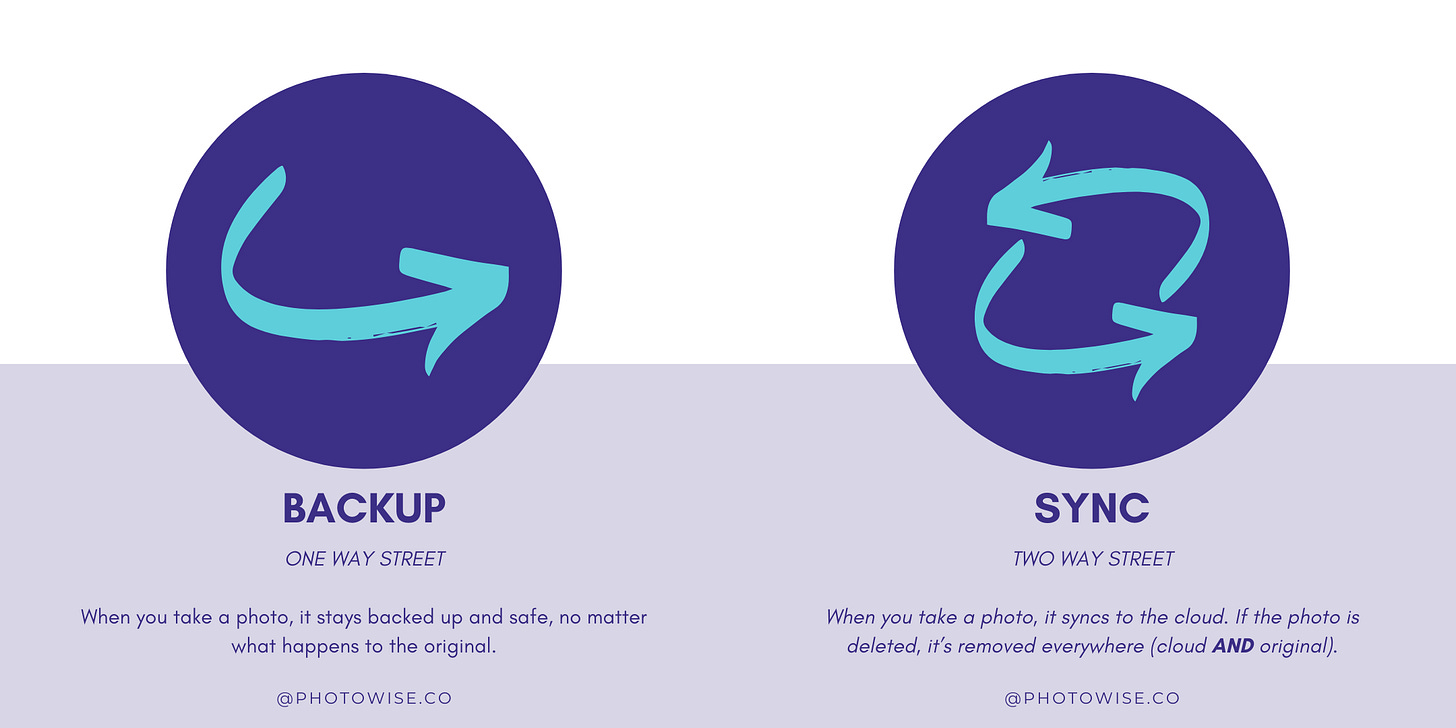In today’s digital age, we all rely on cloud services to store our important files and data. One of the most widely used cloud services is iCloud, Apple’s cloud storage solution. Whether it’s syncing photos, documents, or app data, iCloud offers a seamless experience across Apple devices. But while it’s a convenient storage tool, there’s one important misconception that needs to be addressed: iCloud is not a true backup.
And if you own an Apple device, chances are you’re using iCloud—but what does that actually mean?
WHAT IS THE “CLOUD”?
Before diving into why iCloud isn’t a full-fledged backup solution, let’s quickly talk about the general concept of the cloud.
Imagine you’re moving into a new home. You have a lot of valuable items—furniture, clothes, important documents, and personal keepsakes—that you want to keep safe. But instead of filling your house with everything right away, you decide to rent a storage unit.
This storage unit is like the cloud. You pay a monthly fee to store your valuable items in a safe place that’s accessible whenever you need them. The storage unit is secure, and you can access it any time, day or night, without worrying about the space filling up in your home.
However, the storage unit isn’t quite the same as your home. You don’t own the unit—it’s managed by someone else (the cloud provider), and you have to trust them to take care of your things. You’re also at the mercy of their hours of operation—if they have a problem, you might not be able to access your stuff right away.
In this scenario, your home represents your devices (your computer, smartphone, etc.), and the storage unit represents the cloud. Just as the storage unit is a convenient place to store items you don’t need immediate access to, the cloud is an efficient, remote space where you store data, like photos, documents, and files, that you want to keep safe and easily accessible from anywhere.
However, just as you wouldn’t keep all your most important belongings in a storage unit, you shouldn’t rely on the cloud alone to store your most critical data. Always have an additional way to keep things safe.
IF ICLOUD ISN’T A BACKUP, WHAT IS IT?
To put it simply, iCloud is a sync, not a backup.
Syncing refers to the process of keeping your photos and data updated across all your devices in real time. When you enable iCloud Photos, your photos are synchronized across all your Apple devices that are logged into the same iCloud account.
When you take a photo on your phone, it’s uploaded to iCloud and appears on your other devices.
Any changes you make—whether it’s deleting a photo, editing one, or adding a new one—will be reflected across all your devices. Essentially, syncing makes sure that all devices have the same version of your photos and keeps them updated.
SYNC = a two-way street; changes are mirrored everywhere.
WHAT IS A BACKUP?
A backup, on the other hand, is a way of creating a duplicate copy of your photos (and other data) for safekeeping. Backup is about creating a secure copy of your data in case you need to restore it; it’s more about preservation rather than real-time updates.
When you perform an iCloud backup (or a backup using one of the different strategies outlined below), your photos are stored in the backup file.
If you ever have to restore your phone or computer from a backup, the photos at the time of the backup are recovered.
BACKUP = a one-way street; peace of mind knowing that your photos are safe, no matter what happens to the original.
BEST PRACTICE—USE MULTIPLE BACKUP METHODS
While iCloud can be part of your photo strategy, it should not be your only line of defense. A true backup system should include the 3-2-1 backup strategy.
• 3 copies of your data (original + two backups)
• 2 different storage types (cloud + external drive)
• 1 copy stored offsite (e.g., a second cloud service or physical backup at another location)
If you’re using iCloud for photos, consider that as one of the three copies that are recommended.
Sample Backup Scenarios
External Hard Drive, Dropbox, Amazon Photos
iCloud, External Hard Drive, Amazon (what I personally do!)
While iCloud is an excellent tool for syncing data across Apple devices, it’s important to understand that it’s not a true backup solution. Relying solely on iCloud leaves your photos vulnerable to accidental deletion, data loss due to syncing issues, or even unexpected changes to Apple’s storage policies. Without a proper backup system in place, a single mistake—like deleting a photo—could mean losing it forever.
Let’s safeguard your memories!
Interested in learning more about how to get your photos organized and backed up? Send me a message!




